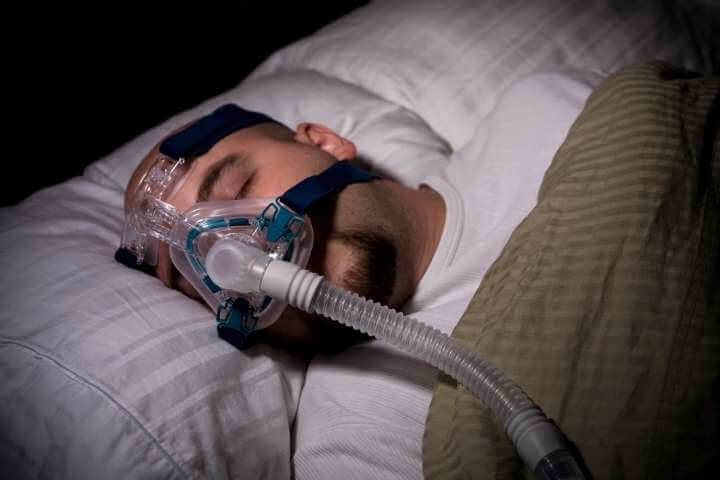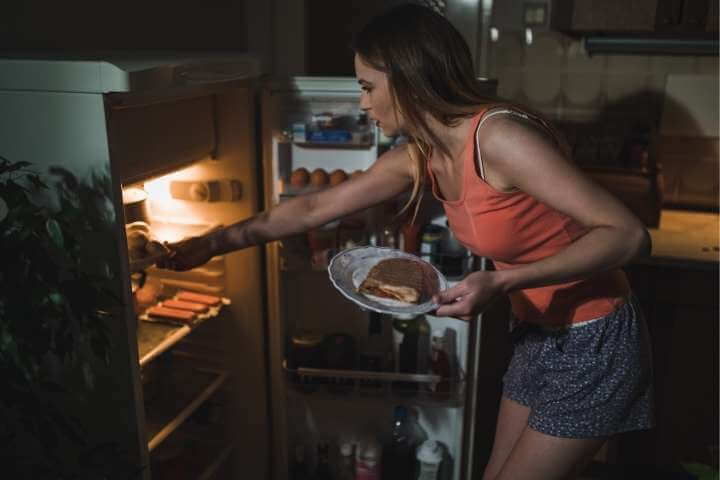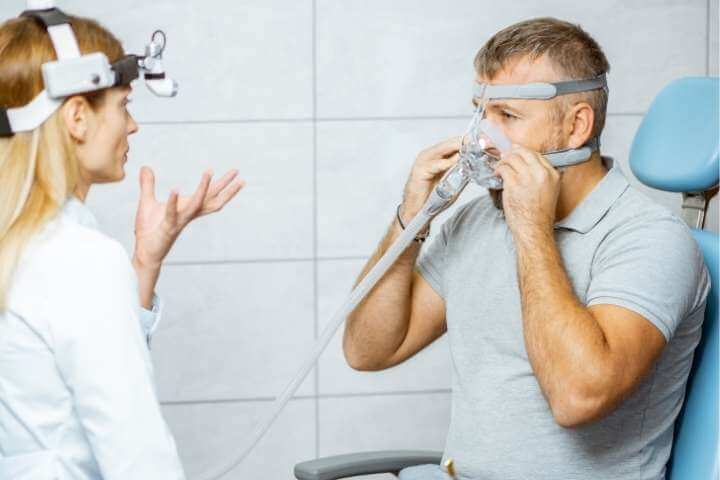People who have restless leg syndrome often mention that they have this unrelenting urge to get up and move around, and this gives them some relief from the pain they feel in their legs.

There are over three million cases of restless leg syndrome diagnosed across the country, and that’s a lot of people who are not able to really fall asleep at night or get good quality sleep.
Many people know about restless leg syndrome and they know about sleep apnea, but what is less known is the connection between the two. People who have obstructive sleep apnea are more likely to suffer from also have sleep apnea.
So, does sleep apnea cause restless leg syndrome or is it just coincidence that people who have one often have the other? Here’s what you need to know about the connection between these two conditions.
The sleep apnea and restless leg connection
These two conditions are ones that people are more likely to develop as they age – that’s just an unfortunate part of aging.
Anyone can be affected by these conditions at any point in their life, however once you reach the age of 40 you are more at risk for developing one or both.
There was a study done that significant restless leg syndrome symptoms (in that they experience symptoms at least 2 or 3 times per week) was found in just over 8% of people with sleep apnea.
Lifestyle habits that can affect both medical conditions
There are some lifestyle habits that can make the symptoms of both sleep apnea and restless legs worse.
For example, if you smoke or drink alcohol in the few hours before you go to bed your qualify of sleep has shown to be worse and therefore the symptoms of both conditions will be worse.
Caffeine can also have a similar effect on people with one or both of these conditions, and it’s recommended to not consume a lot of caffeine close to bedtime.
Improve your sleep habits
For most people with either of these conditions, if they focused on making their sleep habits and routine better they experienced less severe and less frequent symptoms of these conditions.
How did they make their sleep routine better? Well, there’s a couple of ways. First, and most important, is they worked on sticking to a regular sleep schedule. So they went to bed around the same time (within 30 minutes) every night and woke up at the same time every morning.
Additionally, they made sure the space they sleep in is “cave-like” in that it’s cool, dark with minimal distractions. Many of them also developed a relaxing bedtime routine, including unplugging from electronic devices and perhaps even taking a hot bath to help contribute to a restful night’s sleep.
There are some assistive devices that can help both of these conditions, like a CPAP. This machine helps people with sleep apnea to get a good night’s sleep and treat the condition, but it’s also been found to be beneficial in treating the symptoms of restless leg syndrome.
There was one study that found that using a CPAP machine resulted in more than half of the patients in the study reducing the amount of prescribed medication for restless leg syndrome.
There hasn’t been much research into other oral appliance to see if they have the same results as a CPAP on restless leg syndrome, but some in the medical community believe that they would have the same positive effect on reducing symptoms of restless leg syndrome that the CPAP machine does.

Developing your sleep routine
As mentioned, developing a healthier sleep or night routine can really go a long way in giving those who live with sleep apnea and restless leg syndrome. Here are a few ways you can work on your nighttime routine to give yourself a much more restful sleep.
Set aside the time
Most people need somewhere between 7 and 9 hours of sleep each night. So setting aside the time to sleep and making sure you have enough time before you need to be up for work or your other daytime obligations is important.
Eating and drinking before bed
It’s important to not go to bed when you’re either hungry or stuffed, and try to avoid really heavy meals within a couple hours of going to bed. The discomfort of digestion with heavy meals can keep you up, or keep you from getting quality sleep.
Additionally, nicotine, alcohol and caffeine also play a huge role in how fast you fall asleep and how well you sleep during the night. Even though alcohol can make you feel like you’re tired, it can really disrupt your sleep during the night.
Create the right environment
The best rooms for sleeping are those that are cool, dark and quiet. If you’re prone to leaving the television on at night while you fall asleep this can actually prevent you from getting great sleep.
You may also want to consider blinds or shades that will provide a darker environment and even use ear plugs if your home is noisy or you have a partner who is on a different sleep schedule than you are.
Try to limit naps
If you didn’t get a good night sleep last night, it can be really tempting to have a quick nap in the afternoon – just to catch up on some sleep.
Doing this can actually interfere with your natural sleep cycle and impact the quality of sleep you’re getting at night. If you do choose to nap, try to limit the naps to 30 minutes or less and avoid napping later than about 4 or 5 pm.
Be physically active every day
Regular physical activity promotes a much better quality of sleep as well. It’s important to not exercise too close to bedtime, though, and it doesn’t matter what type of activity you do – whatever kind of exercise you enjoy doing.

It is also recommended that you try and get outside every day – even just for a little bit. Fresh air is really beneficial for our wellbeing, and it will help with quality restful sleep.
Try to manage your stress levels
If you go to bed with a lot on your mind, it can make it difficult to fall asleep and get restful sleep.
If you can, write down all the thoughts you have and tasks you need to accomplish the next day – whatever it is that keeps you up at night.
By clearing your mind and writing everything down, it has shown to help with sleep and allow you to fall asleep easier.
Contact your doctor, when needed
Sometimes we try everything we can to fall asleep and have a good night sleep but if it’s a pattern for you and you’re having multiple sleepless nights in a row it might be time to call your doctor.
If you have undiagnosed sleep apnea, talking to your doctor about your difficulties could get you a proper diagnosis and help make sure you’re sleeping better.
With the right diagnosis and treatment, you’ll notice a big difference in the symptoms of your sleep apnea and restless leg syndrome.

Final thoughts
While there isn’t any irrefutable evidence that sleep apnea leads to restless leg syndrome or vice versa, but there definitely is a correlation between the two.
Many people who live with sleep apnea also have some form of restless leg syndrome, however it doesn’t go back the other way. Many people whose primary concern is restless leg syndrome do not necessarily have sleep apnea, but they often do have another underlying medical condition.
It’s very important that those who are living with either of these conditions make a regular sleep routine their priority.
By changing up certain habits – like smoking or drinking alcohol regularly – it can really make a big difference in your quality of sleep. This isn’t to say that people with sleep apnea or jimmy leg syndrome can never drink again. They just might have to limit the amount of alcohol they consume, and perhaps be aware of how close to bed they are drinking it.
It’s also important to talk to your doctor and make sure you are getting the right medications in the right doses to help with your needs. While it’s great to try natural remedies, sometimes these don’t work as well as prescription medication and those medications are needed to get relief.
It may take some time for treatments to start working and take effect, but give it some time once you start working on it. It might take a few weeks of a regular sleep routine in order to notice a difference but keep going with it and don’t give up – it’ll help.
Living with restless leg syndrome can be exhausting – especially when you feel like you haven’t really slept in days or weeks – but that doesn’t mean you have to live with it forever.
The treatment for sleep apnea, though, has been shown to be effective for the symptoms of restless legs too. So while one doesn’t cause the other, the treatment could be really helpful and you’ll get a good night’s sleep!
